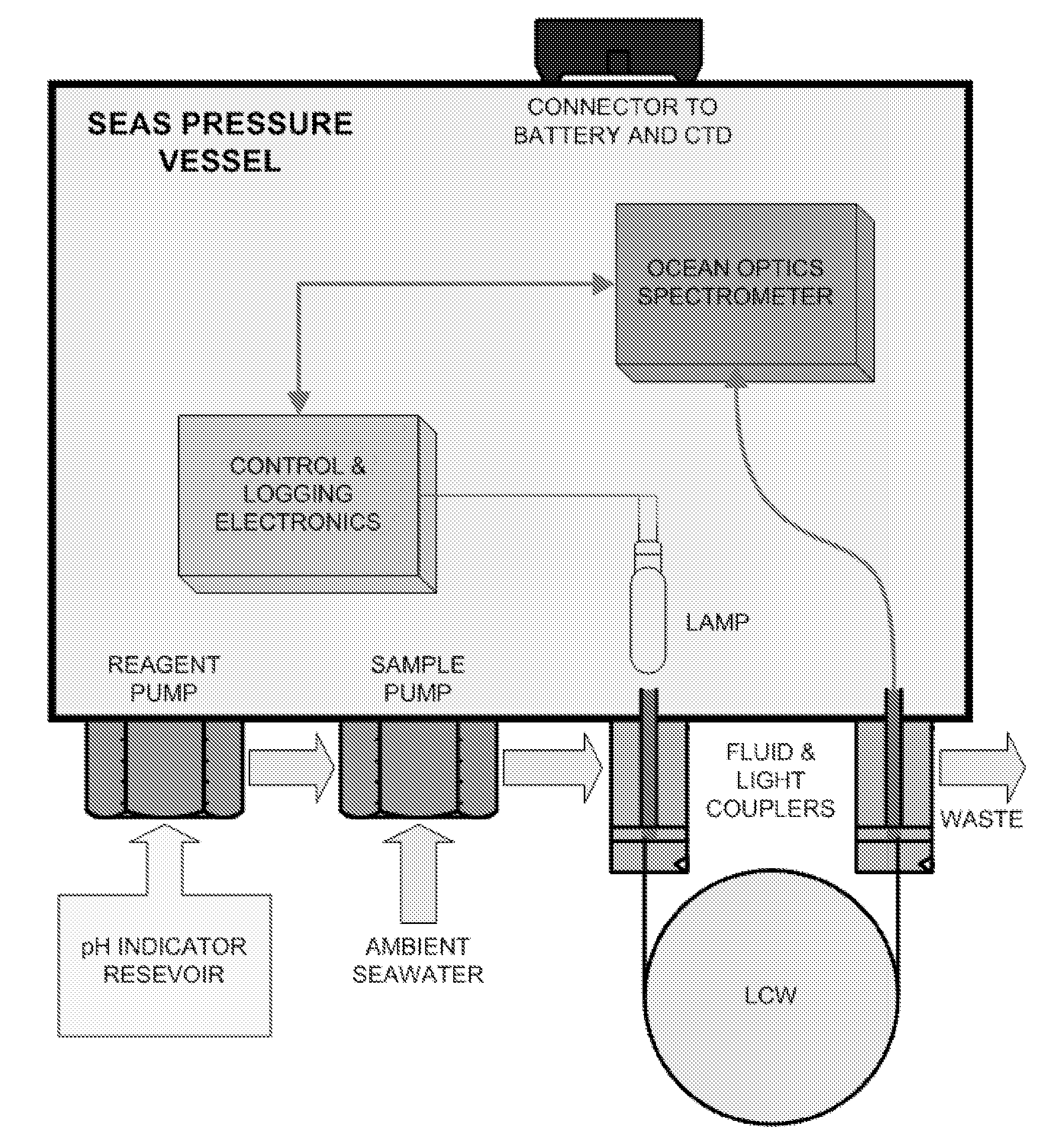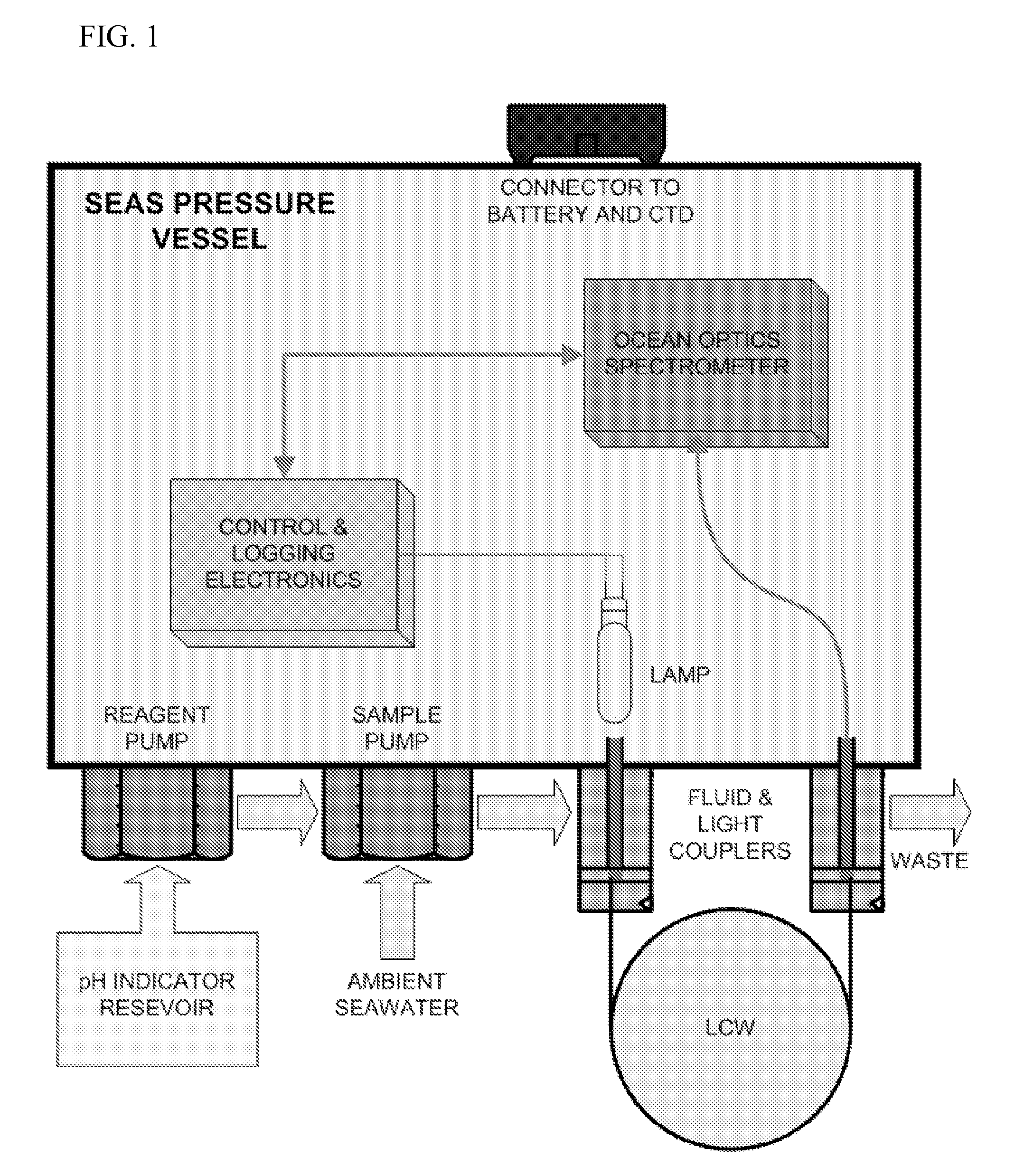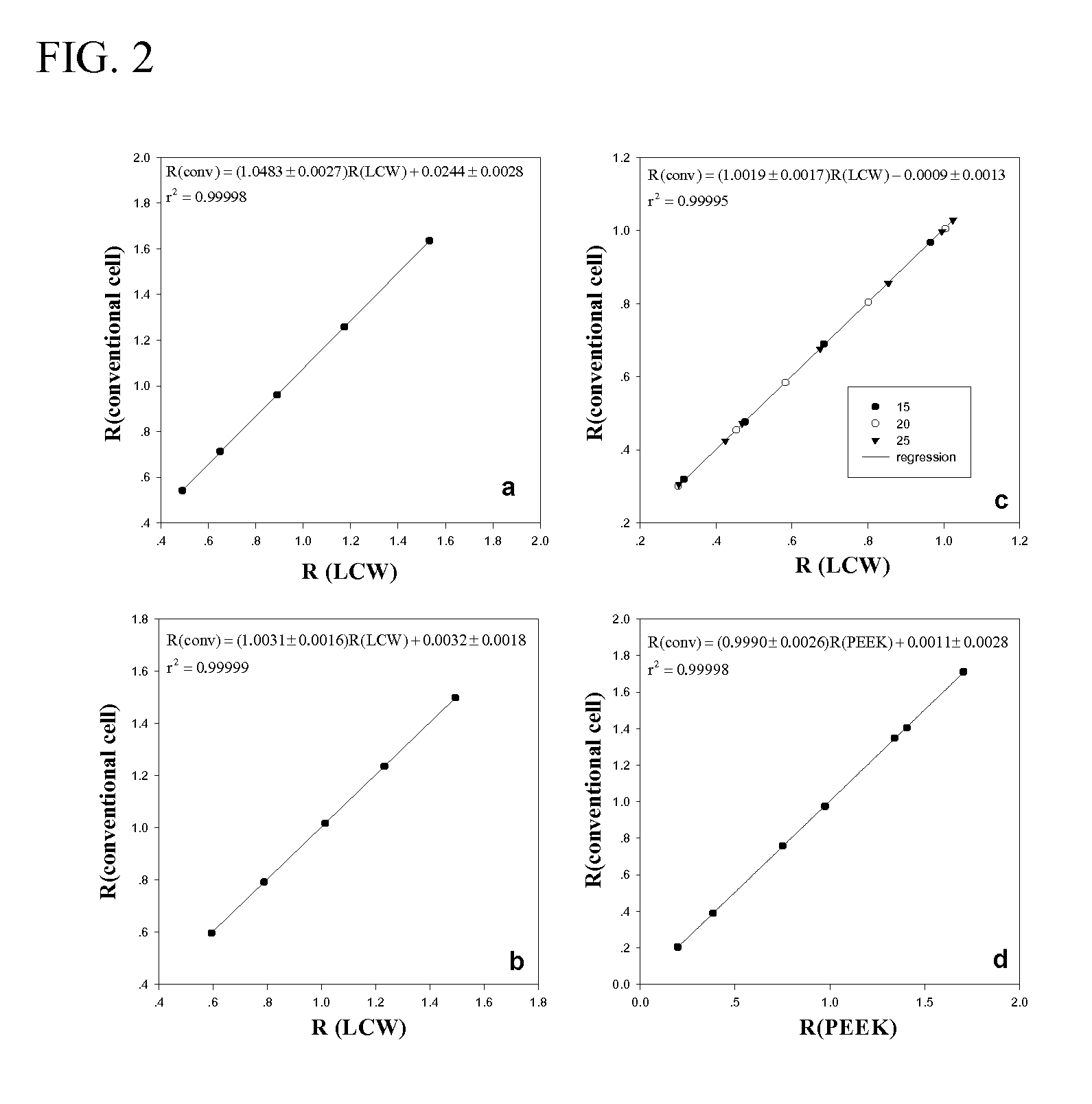Spectrophotometric Measurements of pH in-situ
a spectrophotometric and in-situ technology, applied in the field of ph measurement devices, can solve the problems of more problematic measurement accuracy and less autonomous operation, and achieve the effect of sensitive, precise and accurate measuremen
- Summary
- Abstract
- Description
- Claims
- Application Information
AI Technical Summary
Benefits of technology
Problems solved by technology
Method used
Image
Examples
Embodiment Construction
[0018] Automated in-situ instrumentation has been developed for sensitive, precise and accurate measurements of a variety of analytes in natural waters. In this work we describe the use of ‘SEAS’ (Spectrophotometric Elemental Analysis System) instrumentation for measurements of solution pH. SEAS-pH incorporates a CCD-based spectrophotometer, an incandescent light source, and dual pumps for mixing natural water samples with a sulfonephthalein indicator. The SEAS-pH optical cell consists of either a liquid core waveguide (LCW, Teflon AF 2400) or custom-made PEEK tubing. Long optical pathlengths allow use of indicators at low concentrations, thereby precluding indicator-induced pH perturbations. Laboratory experiments show that pH measurements obtained using LCW and PEEK optical cells are indistinguishable from measurements obtained using conventional spectrophotometric cells and high-performance spectrophotometers. Deployments in the Equatorial Pacific and the Gulf of Mexico demonstra...
PUM
| Property | Measurement | Unit |
|---|---|---|
| frequency | aaaaa | aaaaa |
| frequency | aaaaa | aaaaa |
| frequency | aaaaa | aaaaa |
Abstract
Description
Claims
Application Information
 Login to View More
Login to View More - R&D
- Intellectual Property
- Life Sciences
- Materials
- Tech Scout
- Unparalleled Data Quality
- Higher Quality Content
- 60% Fewer Hallucinations
Browse by: Latest US Patents, China's latest patents, Technical Efficacy Thesaurus, Application Domain, Technology Topic, Popular Technical Reports.
© 2025 PatSnap. All rights reserved.Legal|Privacy policy|Modern Slavery Act Transparency Statement|Sitemap|About US| Contact US: help@patsnap.com



